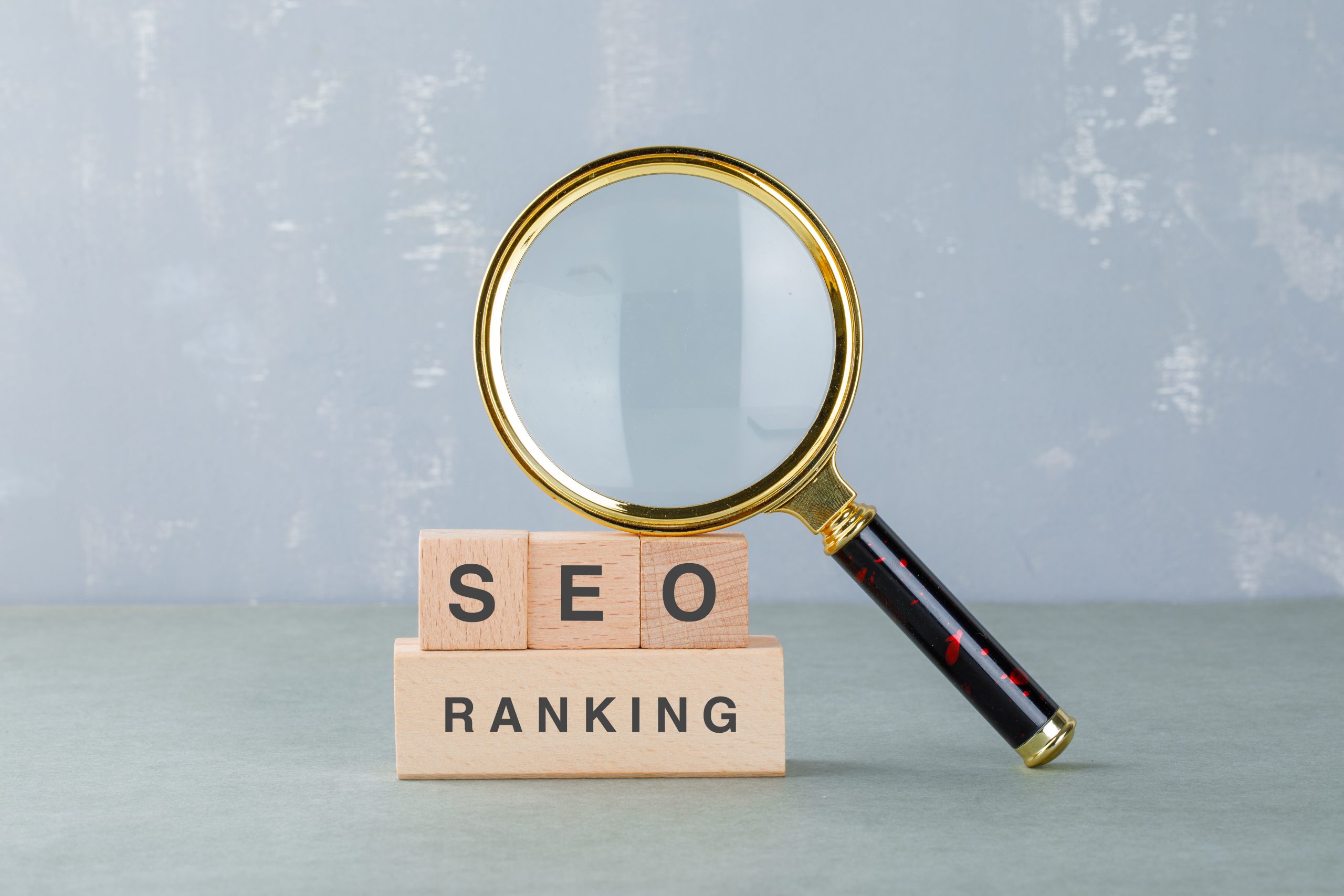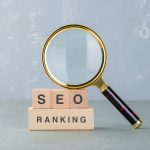Last updated: September 2025
Ranking first on Google in 2025 is more challenging than ever—but also more rewarding. With AI Overviews now rolled out to everyone in the U.S. and searcher engagement increasing to 12% importance in Google’s algorithm, the game has fundamentally changed. Here’s your complete roadmap to achieving and maintaining that coveted #1 position.
The 2025 Google Landscape: What’s Changed
AI-Powered Search Results
Google now generates detailed AI-driven summaries right within the search results, drawing from authoritative sources to deliver clear, consolidated answers to complex questions—right at the top of the page. This means ranking #1 isn’t just about being first in the blue links anymore—it’s about being featured in AI Overviews and maintaining visibility in an increasingly complex search environment.
The New Ranking Factor Hierarchy
Based on the latest algorithm updates, these are the top 8 SEO ranking factors you should focus on first: Quality Content remains the most important SEO factor, as Google wants to show users high-quality, informative, and relevant content.
The complete 2025 ranking factor priorities are:
- E-E-A-T Content Quality (Experience, Expertise, Authoritativeness, Trustworthiness)
- User Experience Signals (Core Web Vitals, engagement metrics)
- Authoritative Backlinks (quality over quantity)
- Search Intent Matching (comprehensive topic coverage)
- Technical SEO Excellence (site structure, speed, mobile optimization)
- AI-Optimized Content Structure (featured snippet optimization)
- Local SEO Signals (for local businesses)
- Brand Authority Signals (mentions, reviews, social proof)
Step 1: Master E-E-A-T Content Creation
Experience: Demonstrable First-Hand Knowledge
Google’s algorithm now heavily weighs whether content demonstrates real experience with the topic. To rank #1:
Show Real Experience:
- Include personal anecdotes and case studies
- Add behind-the-scenes insights only an expert would know
- Reference specific tools, processes, or methodologies you’ve used
- Include original data, research, or experiments
- Share lessons learned from actual implementation
Document Your Journey:
- Create content that shows your progression in the field
- Reference past work and how your understanding has evolved
- Include time-stamped updates showing ongoing expertise
- Connect current content to your historical body of work
Expertise: Deep Subject Matter Knowledge
Comprehensive Topic Coverage:
- Address all aspects of your topic, not just surface-level information
- Include advanced concepts that only experts would understand
- Reference industry standards, best practices, and emerging trends
- Cite relevant studies, statistics, and authoritative sources
- Explain complex concepts in accessible ways
Author Credentials:
- Create detailed author bio pages with relevant qualifications
- Link to professional profiles, certifications, and achievements
- Include speaking engagements, publications, and media appearances
- Display relevant education and professional experience
Authoritativeness: Industry Recognition
Build Industry Recognition:
- Earn mentions from other authoritative sites in your field
- Participate in industry conferences and events
- Contribute to respected publications and podcasts
- Collaborate with other recognized experts
- Earn awards or recognition from industry bodies
Create Link-Worthy Resources:
- Develop comprehensive guides and resources
- Produce original research and data studies
- Create tools or calculators that provide value
- Publish industry reports and trend analyses
Trustworthiness: Reliability and Transparency
Establish Trust Signals:
- Include clear contact information and company details
- Display relevant certifications and security badges
- Provide transparent pricing and policy information
- Show customer reviews and testimonials
- Include legal pages (privacy policy, terms of service)
Maintain Content Accuracy:
- Fact-check all claims with authoritative sources
- Update content regularly to reflect current information
- Correct errors promptly and transparently
- Include publication and update dates on all content
Step 2: Optimize for AI-Powered Search Results
Structure Content for AI Overviews
SGE pulls data from multiple sources to generate instant responses. Google’s AI will ignore your content if it isn’t authoritative, well-structured, and clear.
AI-Friendly Content Structure:
- Use clear, descriptive headings (H1, H2, H3) that match search queries
- Include direct answers to common questions in the first paragraph
- Create scannable content with bullet points and numbered lists
- Add schema markup to help AI understand content context
- Include relevant FAQ sections that answer related questions
Featured Snippet Optimization:
- Answer questions directly and concisely (40-60 words for paragraphs)
- Use “how to” step-by-step formats for process-based queries
- Create comparison tables for “vs” searches
- Include definition boxes for “what is” queries
- Structure lists with clear formatting and logical order
Long-Form, Comprehensive Content
AI systems favor comprehensive resources that thoroughly cover topics:
Content Depth Requirements:
- Aim for 2,000+ words for competitive keywords
- Cover all aspects of the topic, including related subtopics
- Include examples, case studies, and practical applications
- Address common objections and concerns
- Provide actionable next steps for readers
Topic Clustering:
- Create content hubs around main topics
- Develop supporting articles that link to pillar content
- Use internal linking to show topic relationships
- Cover related keywords within the same content ecosystem
Step 3: Technical SEO Excellence
Core Web Vitals Optimization
Run your site through Google PageSpeed Insights. Compress images using WebP or AVIF formats. Invest in quality hosting and leverage browser caching for fast load times.
Critical Performance Metrics:
- Largest Contentful Paint (LCP): Under 2.5 seconds
- First Input Delay (FID): Under 100 milliseconds
- Cumulative Layout Shift (CLS): Under 0.1
- Core Web Vitals: All metrics must be “Good” for mobile and desktop
Technical Implementation:
- Optimize images with next-gen formats (WebP, AVIF)
- Minimize JavaScript and CSS files
- Use content delivery networks (CDNs)
- Implement lazy loading for images and videos
- Reduce server response times to under 200ms
Site Architecture and Crawlability
Your website’s architecture is important from a crawling and indexing perspective. A simple structure, without too many subdirectories, can aid Google crawlers in indexing your website and its pages.
Optimal Site Structure:
- Keep important pages within 3 clicks of the homepage
- Use descriptive, keyword-rich URLs
- Create logical category hierarchies
- Implement breadcrumb navigation
- Ensure all pages are accessible via internal links
Technical SEO Checklist:
- Submit XML sitemaps to Google Search Console
- Optimize robots.txt file for proper crawling
- Fix all crawl errors and broken links
- Implement HTTPS across the entire site
- Ensure mobile-first indexing compatibility
Step 4: Build High-Quality Backlink Authority
Quality Over Quantity Approach
Backlinks are still a big deal in Google’s algorithm, but the game has changed. In 2025, quality beats quantity.
High-Value Link Sources:
- Industry-specific publications and blogs
- Government and educational institution sites (.gov, .edu)
- Professional association websites
- Established media outlets and news sites
- Authoritative reference sources and directories
Link-Building Strategies That Work:
- Create research-backed content that naturally attracts citations
- Develop tools and resources that others want to reference
- Guest posting on relevant, high-authority sites
- Earning mentions through PR and media outreach
- Building relationships with industry influencers and experts
Avoiding Link Penalties
Red Flag Link Practices to Avoid:
- Buying links from link farms or PBNs
- Excessive reciprocal linking schemes
- Links from irrelevant or low-quality sites
- Over-optimized anchor text ratios
- Participating in link exchange programs
Natural Link Profile Characteristics:
- Diverse anchor text including branded and generic terms
- Links from various types of websites and domains
- Editorial links within relevant content context
- Natural link velocity that grows organically over time
- Mix of follow and nofollow links
Step 5: User Experience Optimization
Engagement Signal Optimization
Searcher engagement held as the fifth most important factor in Google’s algorithm in Q1 2025, increasing from 11% to 12%, making user experience crucial for rankings.
Key Engagement Metrics:
- Click-Through Rate (CTR): Optimize titles and descriptions for higher CTR
- Dwell Time: Create compelling content that keeps users engaged
- Bounce Rate: Improve page relevance and loading speed
- Pages per Session: Use internal linking to encourage exploration
- Return Visitors: Build audience loyalty through valuable content
User Experience Best Practices:
- Design for mobile-first user experience
- Use clear navigation and intuitive site structure
- Include engaging multimedia content (images, videos, infographics)
- Optimize page loading speeds across all devices
- Create scannable content with proper formatting
Content Engagement Strategies
Interactive Elements:
- Include polls, quizzes, and surveys
- Add comment sections and encourage discussion
- Embed relevant videos and interactive media
- Create calculators or tools related to your content
- Use click-to-reveal sections for detailed information
Social Proof Integration:
- Display customer reviews and testimonials prominently
- Show social media engagement counts
- Include case studies and success stories
- Add trust badges and security certifications
- Feature media mentions and press coverage
Step 6: Local SEO Domination (For Local Businesses)
Google Business Profile Optimization
For local searches, Google Business Profile optimization is essential:
Complete Profile Setup:
- Verify business information across all platforms
- Add high-quality photos of business, products, and team
- Collect and respond to customer reviews regularly
- Post regular updates and business announcements
- Include relevant business categories and attributes
Local Content Strategy:
- Create location-specific landing pages
- Include local keywords naturally in content
- Reference local landmarks, events, and community involvement
- Build citations in local directories and chambers of commerce
- Participate in local community events and partnerships
Step 7: Monitoring and Continuous Optimization
Essential Tracking Metrics
Search Console Metrics:
- Average position for target keywords
- Click-through rates for important pages
- Core Web Vitals performance
- Mobile usability issues
- Index coverage and crawl errors
Analytics Insights:
- Organic traffic trends and growth patterns
- User behavior flow and engagement metrics
- Conversion rates for organic traffic
- Page performance and bounce rates
- Audience demographics and interests
Ongoing Optimization Process
Monthly SEO Audit Tasks:
- Review and update outdated content
- Check for new keyword opportunities
- Monitor competitor ranking changes
- Analyze backlink profile growth
- Test and optimize meta descriptions and titles
Quarterly Strategy Reviews:
- Assess overall ranking progress
- Refine content strategy based on performance
- Evaluate technical SEO improvements needed
- Review and update link building campaigns
- Analyze and respond to algorithm updates
Advanced Strategies for Competitive Keywords
Topic Authority Building
Content Hub Development:
- Create comprehensive pillar pages for main topics
- Develop supporting content that links to pillar pages
- Cover all related subtopics within your niche
- Build internal linking networks between related content
- Establish yourself as the go-to resource for your industry
Competitor Analysis and Gap Identification
Competitive Research Process:
- Identify top-ranking pages for target keywords
- Analyze competitor content depth and quality
- Find content gaps and opportunities they’ve missed
- Study their backlink profiles for link building opportunities
- Monitor their content publishing frequency and topics
Advanced Technical Optimization
Schema Markup Implementation:
- Add relevant structured data for your content type
- Include FAQ schema for question-based content
- Use Article schema for blog posts and guides
- Implement Review schema for product/service pages
- Add Organization schema for brand recognition
Common Ranking Mistakes to Avoid in 2025
Content-Related Errors
Thin or Duplicate Content:
- Avoid publishing content under 500 words for competitive keywords
- Don’t republish the same content across multiple pages
- Ensure each page serves a unique search intent
- Combine or redirect pages with minimal unique value
Keyword Stuffing:
- Write naturally for users first, search engines second
- Use semantic keywords and related terms
- Focus on topic coverage rather than exact keyword repetition
- Include keywords in strategic locations (title, headings, naturally in content)
Technical Mistakes
Mobile Optimization Issues:
- Ensure responsive design works on all devices
- Test touch elements and button sizing
- Optimize for mobile page speed
- Use mobile-friendly fonts and layouts
Indexing Problems:
- Don’t block important pages with robots.txt
- Fix crawl errors promptly
- Ensure proper canonical tag implementation
- Submit updated sitemaps after site changes
Measuring Success: KPIs for #1 Rankings
Primary Success Metrics
Ranking Progress:
- Target keyword position improvements
- Featured snippet captures
- AI Overview inclusions
- Overall organic visibility growth
Traffic and Engagement:
- Organic traffic increases from target keywords
- Improved click-through rates
- Higher dwell time and lower bounce rates
- Increased pages per session
Business Impact:
- Lead generation improvements
- Conversion rate increases from organic traffic
- Revenue attribution to organic search
- Brand awareness and recognition growth
The Future of SEO: Preparing for Continued Evolution
Emerging Trends to Watch
AI Integration:
- Voice search optimization for smart speakers
- Visual search optimization for image-based queries
- Conversational search query optimization
- AI-powered content personalization
User Experience Evolution:
- Page experience as a stronger ranking factor
- Interactive content becoming more valuable
- Video and multimedia content prioritization
- Accessibility compliance as a ranking consideration
Taking Action: Your 90-Day Ranking Roadmap
Days 1-30: Foundation Setting
- Complete comprehensive site audit
- Optimize Core Web Vitals and technical issues
- Research and validate target keywords
- Begin E-E-A-T content optimization
Days 31-60: Content and Authority Building
- Publish comprehensive pillar content
- Launch strategic link building campaigns
- Optimize for AI Overviews and featured snippets
- Improve user experience signals
Days 61-90: Scaling and Optimization
- Monitor ranking improvements and adjust strategy
- Expand content around successful topics
- Build additional authoritative backlinks
- Plan long-term content and optimization roadmap
Conclusion: Consistency Is Key to #1 Rankings
Ranking #1 on Google in 2025 requires a comprehensive approach that balances traditional SEO fundamentals with new AI-powered search realities. Success comes from consistently creating exceptional content, building genuine authority, and providing outstanding user experiences.
The businesses that achieve and maintain #1 rankings aren’t those looking for quick fixes—they’re the ones committed to long-term value creation and continuous optimization. Focus on serving your audience’s needs better than anyone else, and the rankings will follow.
Remember: Google’s ultimate goal is providing the best possible search experience. When your content genuinely achieves that goal better than your competitors, ranking #1 becomes inevitable.
Ready to dominate Google rankings? Our SEO experts specialize in helping businesses achieve and maintain #1 positions in competitive markets. Contact us for a comprehensive SEO audit and custom ranking strategy.






